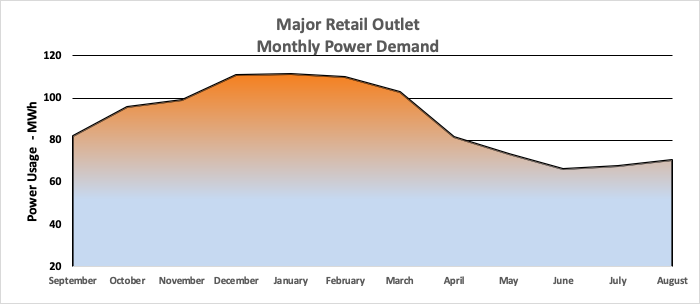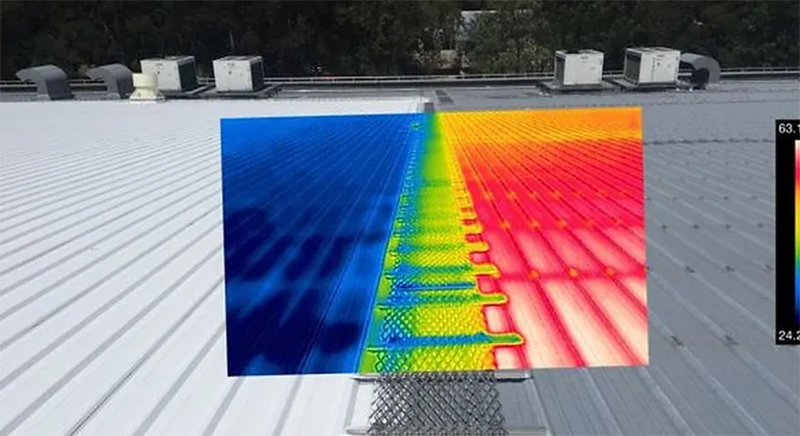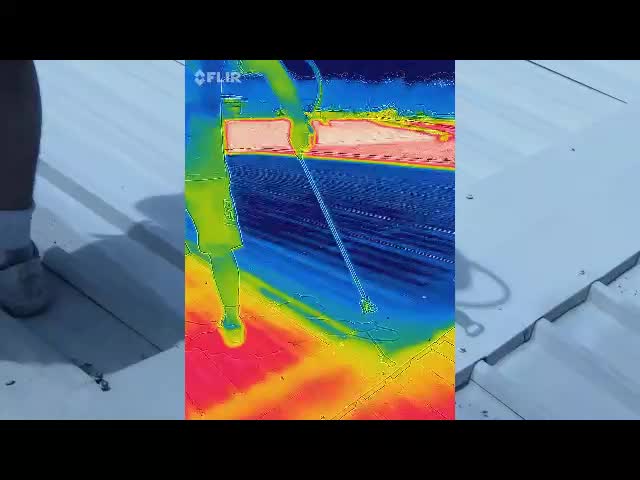Company Insight
Sponsored by Skycool
Highly Effective Energy Management
One of the critical essentials for modern industry is the reliable supply of electricity. However, that commodity occupies an ever greater portion of the cost of doing business and its reliability of supply is subjected to increasing risk. Moving to cleaner generation exacerbates both of those central concerns as we navigate the change.
One of the critical essentials for modern industry is the reliable supply of electricity. However, that commodity occupies an ever greater portion of the cost of doing business and its reliability of supply is subjected to increasing risk. Moving to cleaner generation exacerbates both of those central concerns as we navigate the change.
One of the larger demands for electricity in warm countries like Australia is the cooling of living and working spaces for not only health and wellbeing, but also perishable product preservation. For example, retail outlets have 50-70% of their electricity demand dedicated to the Heating Ventilating and Air conditioning (HVAC) systems. An examination of a typical shopping centre’s total monthly power billing clearly shows the summer requirement for cooling:

This chart, from an Australian 4,000m2 national brand store averages each month’s power bills. Note that the summer months peak demand is 65% higher than the winter period, equalling a 205MWh increase.
If we multiply that effect over thousands of similar facilities throughout most warm countries, we have an enormous summer loading for power just to keep cool.
The Australian Federal Dept. of Climate Change & Energy examined the power demands for low-rise, wide-span buildings and found “60% - 65% of electricity is typically used for heating, ventilation and air conditioning ...” That electricity for HVAC power in warehouses, shopping malls, airports, and the like, amounts to over $3billion in additional costs – in just one country.
If we could save a quarter of the HVAC power demand in commercial/ industrial buildings that would help mitigate much of the huge summer cooling electricity demand threatening reliable energy dependability.
Most of our cooling mechanisms (HVAC, insulation, sub-roof voids, industrial ceiling fans, etc.) are designed to treat the excess heat loading after it has heated our buildings. In summer the major solar heat influx is through the roof where a typical industrial roof will get to 60-75oC . That then forms a huge radiator forcing heat into the building, with the usual insulation partially slowing – but not stopping – that incursion. Once inside, the same insulation slows any thermal release overnight, thereby trapping the heat inside for the HVAC to deal with long after dark.
Why not simply stop that massive solar heating right at the source by reflecting it back into space from the upper surface of the roof – without heating the atmosphere?
Enter Cool Roof technology
A “cool roof” is not just a white roof. Cool Roof technology, like the highly effective SkyCool, involves a specialised coating material which has very high solar thermal reflectance. As Prof. Geoffrey Smith, stated in his book, Green Nanotechnology - Solutions for Sustainable Energy and the Built Environment, “The thermal performance of facades and roofs in buildings is a key to determining the need for heating or cooling energy for the thermal comfort of the occupants. The improvement potential is huge, and it has been estimated that the retrofitting of facades and roofs to make them more thermally efficient can reduce today’s demand for heating and cooling by up to 50 to 60%. The need for action is urgent.” page 313.
On page 315 he notes, “The practical energy savings of a coating with high solar reflectance and thermal emittance can be very large. Box 7.3 (pages 316-317) reports specific data for three different commercial buildings, demonstrating that the power for air conditioning can be decreased to a fraction of what is demanded for standard roofing, and that the average roof temperature can be decreased by 15oC to 20oC or even more.”
One of the most powerful cool-roof coatings is an Australian invented product known as “SkyCool”. This coating has been shown to reduce the temperature of a standard industrial metal roof from 63oC down to a very comfortable 24oC on a 28oC day. With that massive overhead radiator ‘switched off’, the interior of the building is now very much cooler. That, in turn, reduces the air-conditioning (HVAC) load by 25-50% - a very significant power and cost savings.

This thermal image of the 17,000m2 St Marys Village shopping centre roof shows the dramatic effect of cool-roof coating, SkyCool, on the left compared to a normal galvanised roof. The coating dropped the surface temperature by 39oC.
From Prof Alan Finkel’s observation, “...that a gigawatt of power not needed because you’ve done an efficiency measure is the best form of energy generation that you could possibly ever hope to have” building operators and owners should first examine the reduction of demand to establish the most economical baseline before investing in the installation of the usual post-incursion responses.
Investing in SkyCool cool-roof technology provides a life-long, no maintenance, energy-free solution to maintaining a cool working environment. SkyCool is a coating installed on the building roof without impinging upon the business inside the building, except for instantly cooling it down.
Please call or email SkyCool to discover how this cool-roof technology can very cost-effectively benefit your business. Extensive details can also be found at here.
Contact information
SkyCool Pty Ltd
PO Box 1667 Hornsby NSW, Australia
Tel.: +61 2 9477 4095
Email: info@skycool.com.au
Web: www.skycool.net.au

